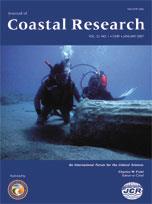Technical information in support of integrated terrestrial and marine protected area conservation requires coastal zone base mapping that spans the land-sea interface. However, the coastal zone is currently served by two independent and nonoverlapping cartographic traditions—topographic maps and hydrographic charts. We discuss challenges towards harmonizing the information from these incompatible sources into a standardized base map capable of supporting future integrated terrestrial and marine conservation applications. We use an example from an archipelagic area off British Columbia, Canada, that aspires to mountaintop to sea-bottom conservation to highlight problems encountered when contemplating integrated topographic and hydrographic base mapping. Lack of a standardized representation of the coastline, confusing terminology, lack of high-density mapping of the coastal zone, and the inability to translate between various vertical datums are the most serious issues. Also, we review current solutions being developed toward improved base mapping for the land-sea interface.
How to translate text using browser tools
1 January 2007
Reconciling Maps with Charts towards Harmonizing Coastal Zone Base Mapping: A Case Study from British Columbia
P. M. Bartier,
N. A. Sloan
ACCESS THE FULL ARTICLE

Journal of Coastal Research
Vol. 2007 • No. 231
January 2007
Vol. 2007 • No. 231
January 2007
Haida Gwaii
marine conservation
Queen Charlotte Islands
vertical datum




